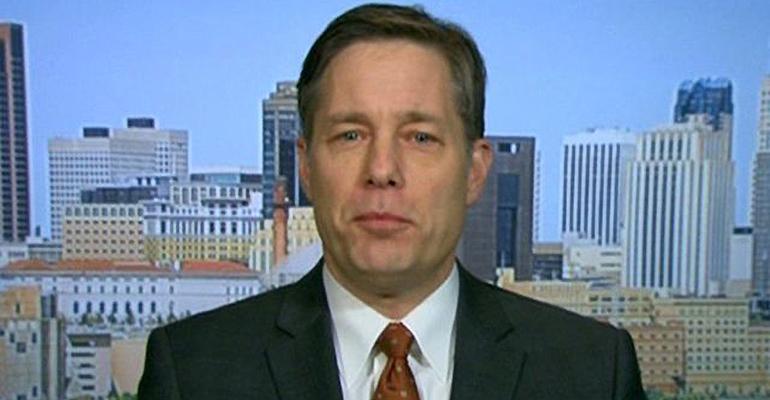The Mairs & Power Growth Fund (MPGFX) has one characteristic that likely distinguishes it from any other equity fund: Its investments are concentrated in the Upper Midwest, particularly in Minnesota, where the company is based in St. Paul.
You can’t argue with the fund’s long-term results. It has outperformed the S&P 500 Index over the last 10- and 15-year periods by almost a full percentage point (on a quarterly basis), according to Morningstar. And it has bested other large-cap blended funds over those periods, as well as for the past three- to five-year periods.
The 56-year-old Henneman, who is the firm’s chief investment officer, sees his fund’s local focus as a key to its success. The area hosts a strong array of companies, and he and his colleagues have easy access to the companies’ executives and other employees.
Henneman doesn’t worry about over-concentration when it comes to the Upper Midwest holdings, because the companies generate revenue all over the world. He talked about these and other issues in a recent interview.
WealthManagement.com: What are the most important elements of your investment philosophy?
Mark Henneman: Long-term investing and focusing on companies that can deliver above-average earnings growth and returns for a long period of time—companies that have durable competitive advantages. We define durable competitive advantage along Michael Porter’s framework of five forces. (Those forces consist of competition in the industry, potential of new entrants into the industry, power of suppliers, power of customers and the threat of substitute products.)
WM: Why focus on the Upper Midwest?
MH: There’s a great group of companies to choose from close to us. There’s diversity across important economic sectors. The companies tend to be high quality. And we have the benefits of proximity—great access to management.
We also get some value out of being in the community of these companies. We get a more complete picture of sentiment in talking to different employees, not just the CEOs and CFOs. We’re around the companies’ suppliers and customers too. All that helps you get a better understanding.
WM: Do you have any concern about over-concentration geographically?
MH: No, we don’t increase any position once it reaches five percent. That’s important for a lot of our shareholders, such as ones working at 3M and U.S. Bancorp (both large holdings in the fund and based in Minnesota).
Also, our companies do the vast majority of their business outside the Midwest. Many have significant international sales. For example, 3M has 60 percent of its sales outside the U.S. Even for our domestic companies, the Upper Midwest is a small part of their revenue base. We get a lot of pushback on this, but Minnesota companies outperform the market over the long term.
WM: The fund’s name includes the word “growth,” but that doesn’t really describe your target investment, does it?
MH: It was named in the early 1960s, before Morningstar and Lipper created the definition of growth, value and core. We think of ourselves as core managers, more on the value side, as we are stingy on what we will pay for stocks. We look for companies that grow but not at a super high rate, which is less sustainable. Low single-digit to high single-digit growth is our sweet spot.
WM: Has your investment philosophy changed at all during your career?
MH: I always felt before I got here that I would invest money in long-term strategies. Most of us came here from organizations where we didn’t have that luxury. We were under pressure to deliver short-term results. That pressure doesn’t exist here.
WM: What kind of trends do you see for the investment business going forward?
MH: The trends are already in place—low cost ETFs and Index funds—will continue. And active management will continue to focus on the short term. In fact, that will become more acute, as active managers seek to maintain any shares of the business.
Of course, I don’t think that’s a great strategy. Mairs & Powers will ignore all of that and do what we do, which is different from the rest of the world. We are different from Index funds and ETFs because we dig into the companies we own. And we are different than other active managers because we have a much longer time horizon.
WM: Don’t ETFs represent long-term investments?
MH: The trading volume of ETFs is so high as to indicate that people are not using them as they are meant to be used. Clearly, there is a lot of speculative ownership of ETFs. In our shareholder base, we do see flows in and out, but they are very subdued relative to the industry. We’re pleased with that, because it shows investors are in it for the long term.
There are investors who buy our funds when they do well and then sell when they underperform. That’s obviously not helping you. Our director of investor relations is available to speak with financial advisors and individuals to see if the fund fits their philosophies.
WM: What’s your impression of financial advisors?
MH: The ones we get to know are ones that use our fund. We find them to be very hardworking and have their clients’ interest firmly in mind. They do that by understanding the investments they make on behalf of their clients.
WM: Where are the most attractive investment opportunities now?
MH: We are finding value in more defensive sectors of the market. The move we have seen to growth stocks has left some value stocks more attractive. That includes consumer staples like Hormel, healthcare companies like Roche and Abbott Labs and industrial companies like Fastenal.
These tend to be stocks that are less exciting. We have a sense that growth stocks are overdone. We’ve been trimming those holdings, such as Graco, Toro and 3M. They’re great companies, but ones we think have overshot from a valuation standpoint.

